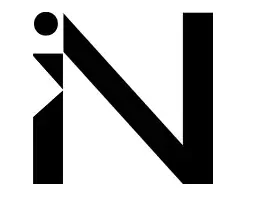Section 321 Customs Clearance Explained: Key Benefits and Compliance Tips
Section 321 customs clearance allowed shipments valued at $800 or less to enter the U.S. duty- and tax-free, simplifying the import process and speeding up delivery times. This provision was designed to ease customs procedures for low-value goods, reducing paperwork and avoiding costly delays for businesses and consumers.
As of August 29, 2025, Section 321 has been globally suspended, meaning all shipments, regardless of value, now require formal customs entry and applicable duties. This change significantly impacts how businesses handle cross-border shipments and increases the importance of understanding the updated clearance requirements.
Many importers relied on Section 321 to streamline trade and reduce costs, so the suspension introduces new challenges for ecommerce and logistics. Staying informed about these changes is essential for managing customs processes efficiently in the current regulatory landscape.
Understanding Section 321 Customs Clearance
Section 321 allows for streamlined customs processing of low-value shipments entering the United States. It sets clear rules on which goods qualify, their daily value limits, and applicable exclusions. This provision reduces the need for formal customs entries, reducing both time and cost for eligible shipments.
Definition and Legal Basis
Section 321 is part of the Trade Facilitation and Trade Enforcement Act (TFTEA) and builds on the Tariff Act of 1930. It permits duty- and tax-free entry of shipments valued at $800 or less per day, per importer. This threshold simplifies customs procedures by exempting small shipments from formal entry requirements.
The provision’s legal framework establishes the conditions under which shipments qualify for streamlined clearance. Customs authorities use Section 321 to expedite processing, reducing administrative burdens. It supports cross-border trade, particularly benefiting e-commerce businesses handling numerous low-value parcels.
Eligible Goods and Exclusions
Shipments eligible under Section 321 include most tangible goods valued at $800 or less. These can enter duty-free without formal customs entry or payment of taxes. However, some goods are excluded, such as alcohol, tobacco, firearms, and products requiring specific inspections or permits.
Restricted or prohibited items remain subject to standard customs procedures, regardless of value. It is essential for importers to verify product eligibility in advance. Failure to comply with exclusions can lead to shipment delays or penalties.
Daily Value Limit and Thresholds
The core limit under Section 321 is a daily value cap of $800 per person, per day. Shipments valued above this threshold must undergo regular customs clearance, including duties and taxes. The $800 limit replaced the previous $200 threshold in 2016, expanding the scope of duty-free imports.
This limit applies cumulatively across shipments entering the U.S. in a single day by the same importer. If multiple packages exceed $800 combined, only the portion at or below the threshold is eligible for duty-free treatment. Accurate valuation documentation is critical to avoid disputes or penalties during clearance.
Compliance and Best Practices for Section 321
Effective customs clearance under Section 321 requires accurate documentation and attention to regulatory requirements. Utilizing expert support and avoiding common pitfalls can prevent delays and penalties.
Required Documentation
All Section 321 shipments must include a clear and complete declaration to U.S. Customs and Border Protection (CBP). Key documents typically include a commercial invoice detailing the shipment’s value, description, and quantity. The shipment’s value must not exceed $800 USD to qualify for duty-free entry.
Accurate documentation ensures compliance with customs regulations and expedites clearance. Misstating the shipment value or providing incomplete product descriptions can trigger inspections or penalties. Importers should verify that documentation matches the physical shipment exactly to prevent issues during processing.
Role of Customs Brokers
Customs brokers play a crucial role in navigating Section 321 clearance. They manage necessary paperwork, help classify goods properly, and ensure all declarations comply with CBP requirements. Brokers reduce the complexity of customs procedures, saving time and avoiding costly errors.
Using a licensed customs broker can especially benefit businesses handling multiple shipments. Brokers offer expertise in regulatory changes and maintain communication with customs officials, smoothing the clearance process. Their involvement is often essential for maintaining compliance in cross-border ecommerce logistics.
Common Mistakes to Avoid
One common mistake is exceeding the $800 value limit, which disqualifies the shipment from Section 321 benefits and incurs duties. Another frequent error is improper classification or incomplete product descriptions, leading to customs delays or fines.
Failing to submit required documentation on time can also disrupt clearance. Importers must double-check shipment details and updates to customs policies to avoid compliance risks. Consistent record-keeping and adherence to Section 321 criteria help prevent penalties and ensure faster processing.




